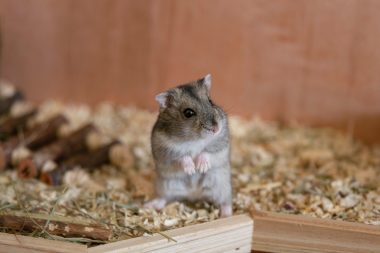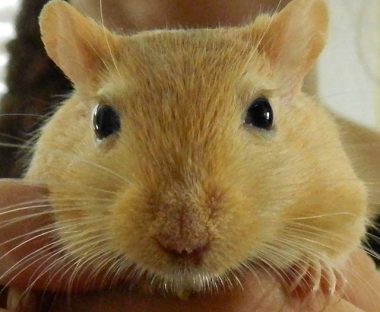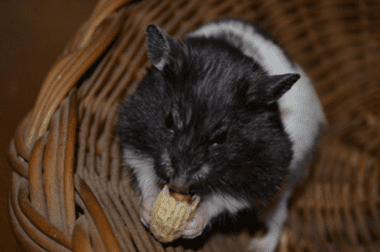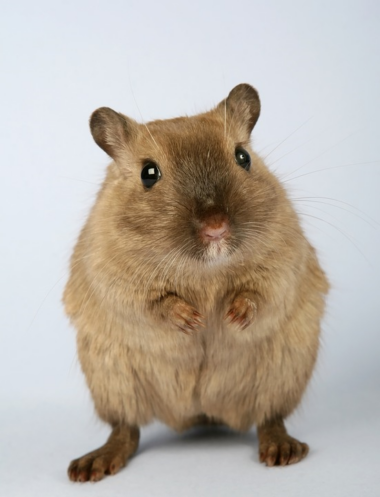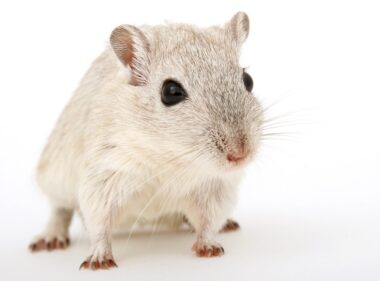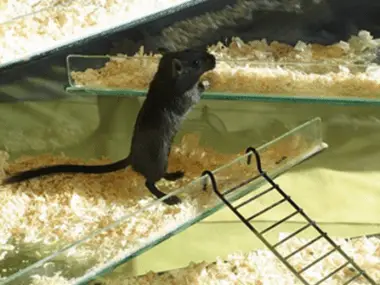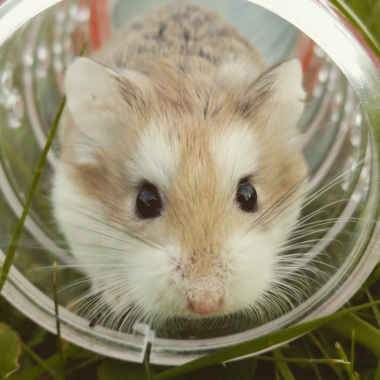Every pet lover wants their pet to live the best life. Making the perfect habitat starts with the proper home, so make sure the one you choose is made for tiny creatures, or use a tank. Whatever housing you pick, make sure your gerbil has a ceramic or wooden box to hide in. It also has a cardboard tube or box.
How much do gerbil cages cost?
A gerbil cage costs from $50 to $60. Each gerbil consumes $50-60 per year in food, and the tank requires $50-100 in bedding. A checkup costs $40, medicine costs $10, and operation costs $200.
What are the interests and liking of gerbils?
Gerbils are excellent children’s pets. They provide many hours of enjoyment and pleasure. Even though caring for a gerbil is simple and uncomplicated. Parents and children should be aware of a few things before adopting one of these friendly rodents into their homes.
Social:
Gerbils, unlike hamsters, are extremely social animals, and being alone can be detrimental to their health. Gerbils who live with other gerbils enjoy longer and healthier lives, according to studies. But isolated gerbils are sickly, overweight, and have shorter lifespans. If you are bringing a gerbil into your household, bringing two at once may be beneficial for your gerbil.
Fragile:
Gerbils are delicate creatures, so if you are buying one for a youngster, you should constantly monitor them when they are being handled. Larger, predatory pets, including cats, dogs, and even ferrets, should be kept away from your gerbil. Also, never grasp or hold a gerbil by the tail, since this might result in significant harm.
Chewers:
Gerbils, like the majority of rodents, are voracious chewers. You don’t want to keep your gerbils in a wooden cage. Wire cages are also ineffective since gerbils like to dig and the metal might injure them.
What necessities should be present in a gerbil’s cage?
Water Bottle:
Attach a 4-8-ounce water bottle to the tank or cage’s side to prevent water from draining, and replace the water at least once a week. This Alfie pet bottle stands alone and is an excellent choice. When cleaning the cage, remove the water bottle washer and scrape it with your fingers. Pay special attention to the underside/lip of the water bottle, which is where germs can accumulate.
Nest box:
Include a wooden nest box for gerbils to use for hiding, sleeping, and a roof deck. Your creatures will like wooden hideouts and houses.
Exercise wheel:
A wire mesh wheel with a diameter of 8-9 inches (0.23 m) should be provided. To keep the wire mesh wheels from squeaking, apply Chapstick or beeswax to them. Slat-style wheels are not recommended for gerbils because their tails can get entangled in them. Solid plastic types are good, as long as they aren’t made of thin plastic that your gerbils can nibble through. Get rid of it if they start eating a whole.
Toys:
Toys are a must-have for your dogs, and they should appeal to their natural inclination to chew and burrow. Climbing and chewing may be done with something as basic as a four-by-four wood piece with huge holes punched into it. Keeping your gerbils engaged is as simple as adding new toilet paper rolls and large cardboard boxes regularly. Avoid plastic tubes, toys, and plastic homes or hideaways due to their indiscriminate gnawing.
Exercise Balls:
Your gerbil may run around your house freely once they are inside the ball. If there are dogs, cats, or young children in the house, these toys should be used with caution. As gerbils have been known to roll their balls down flights of stairs when left alone. Also, ensure that your gerbil’s game is well-ventilated to avoid overheating.
Racing cars:
These gerbil-powered runabouts are small automobiles. The automobile has an enclosed ball or wheel system, and your gerbil only has to run along to start things moving. These roadsters are popular among children, but like with exercise balls, they should be used with caution.
Sand bath:
For gerbils, a sand bath containing chinchilla dust is a particular treat. It is beneficial and calming to them. Use a dog or cat food bowl with a diameter of at least 6-inches and give her gerbils a dust wash at least once a week. Leave it in the cage for about an hour before removing it to avoid their using it as a toilet. It aids in the reduction of oil in their coat, and they seem to appreciate it.
Platforms:
Finally, if feasible, create different levels for your gerbils to bounce around on within the cage. Adding new toys and giving alternative climbing platforms can encourage their inventiveness and keep them happy. Since gerbils enjoy a challenge and continually altering their surroundings.
What are the key features to look for in a gerbil house?
Size:
Gerbils are incredibly active animals who require a lot of room to run, climb, and explore. Gerbils kept in overly tiny cages are prone to being aggressive and irritable. A minimum of 18 inches broad, 24 to 30 inches long, and 12 inches high is required for one or two gerbils. They perform great in a 15-gallon tank as well (or larger).
Safety:
You will want to keep your gerbil safe as a pet parent.
- Make sure your gerbil’s environment is free of sharp edges.
- Your gerbil’s habitat door or top should close tightly to prevent your gerbil from pushing it open and escaping.
- Doors should always swing open to the outside.
- If you are using a tank with a screen cover or a plastic top, make sure it fits securely over the edges to prevent your gerbil from escaping.
Modular Habitats:
A network of plastic tubes is included in certain habitats. Gerbils may swiftly demolish these homes, even if they are adequate for hamsters. Tubes are good for playing. However, it is not advised that you keep a gerbil in one.
Miniature Wildlife Habitat:
Small animal habitats come in a range of sizes and shapes to ensure that your pet has all it needs to live a long and happy life. Some habitats feature a stiff snap-on wire cover over a plastic foundation, while others include both a plastic foundation and a plastic top. These habitats are available in a variety of forms and sizes, and some even include exercise wheels.
These habitats are very inexpensive and may be customized with a variety of gerbil furniture and toys. Although gerbils may survive in wire enclosures as they are natural borrowers, this is not normally suggested. As they dig instinctively, the wire on these habitats might cause harm to their noses. In addition, their proclivity for digging causes a lot of shavings to be thrown out of the environment.

What are the types of cages available for gerbils?
Gerbils are recognized for their warmth toward humans and many other gerbil close relatives. They also love their tunnelling, leaping, nibbling, and charming, comfortable naps. Because of these wonderful traits, pet keepers must choose gerbil housing carefully.
Aquariums:
Glass tanks a household recommendation and frequently suggested alternative for gerbil cages. They are affordable, hassle-free, and start enjoying more time with your gerbils. Above all, the gerbils are unable to nibble through their cages.
It is fantastic for the tiny pets since they are kept secure and sound inside with little risk of escaping. It also preserves the bedding clean by keeping it indoors.
You will need a grid or a lid firmly attached on top of an aquarium or terrarium to facilitate air circulation. It also inhibits any house cats from preying on your gerbils by preventing them from leaping away.
The cost of these aquariums is low. Upcycling an aquarium of the fishes or pet lizzards might be a good place to start with a second-hand enclosure.
Another advantage of using transparent materials in tanks as gerbil enclosures is that they can be used in any area of the nation. It is irrespective of temperature, and they are small enough for any living arrangement.
Plastic Cages:
These enclosures, which come in a variety of plastic and wire-cum-plastics, are another popular choice for your pet’s cages. With their bright colors and designs, they are appealing to the gerbil owners, mostly youngsters.
Children believe they are amusing and enjoy the tubes, thus they could keep the kids engaged in the pets for longer duration. However, unlike hamsters, gerbils are voracious chewers that will ruin any plastic parts. It is likely to happen that they will frequently escape by chewing their passage out.
Some types have less airflow, so you’ll have to pay particular attention to their upkeep because they tend to stink more rapidly. Hanna proposes using a plastic cage as a climbing frame while maintaining your gerbils’ primary habitat as a solution.
Wire Cages:
Wire cages are another popular choice for gerbil cages. A wire is an efficient barrier against gerbils gnawing their path out and fleeing.
Choose a cage with close enough bars to prevent your gerbils from escaping or getting their teeth, feet, or tails hooked. Bars should be spaced no more than 1/4 inch (10.16 cm) wide.
Wire cages provide for lots of circulation, but bedding will inevitably run out, making the surrounding area a mess. In other cases, where individuals live in particularly humid areas, the high humidity might generate a stronger stench in the glass tank configuration, and pet owners may choose wire cages.
What should be the cage size?
When choosing a cage for your gerbils, remember that they are sociable animals. They require a lot of space to burrow, run, and socialize with other gerbils. Always obtain the pets in pairs.
Choose the largest housing you can clean—they will enjoy the great room. It is not just about the length, but also about the deep and hiding places for them. It is critical to their pleasure.
Maintain your gerbil habitats hygienic, regardless of size. Every 2-3 weeks, clean them out.
From the nesting nook, dump everything of the substrate. Wash the gerbil’s home with mild detergent or vinegar. Give all the toys a brief wash, and change with 7.62 cm of substrate. Return a good amount of the used materials from the edges to the nesting box for a familiar scent.
The most costly year to keep a gerbil is the first year. It is because you will need to purchase everything you will need, including a cage and an exercise wheel. These initial setup fees range from $150 to $200, and if you purchase more than one gerbil, you will have to spend a bit more.
Once these items are in place, you must consider the recurring expenditures. Bedding and food are the two most common recurrent expenses.

